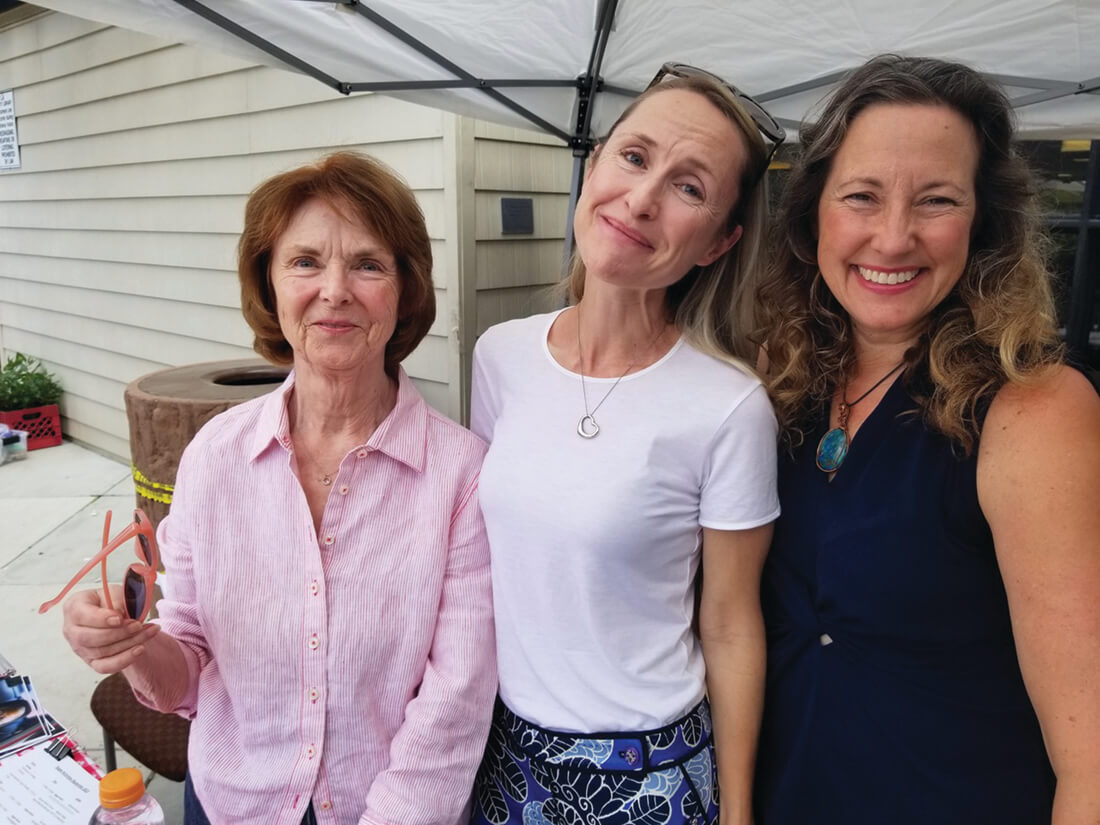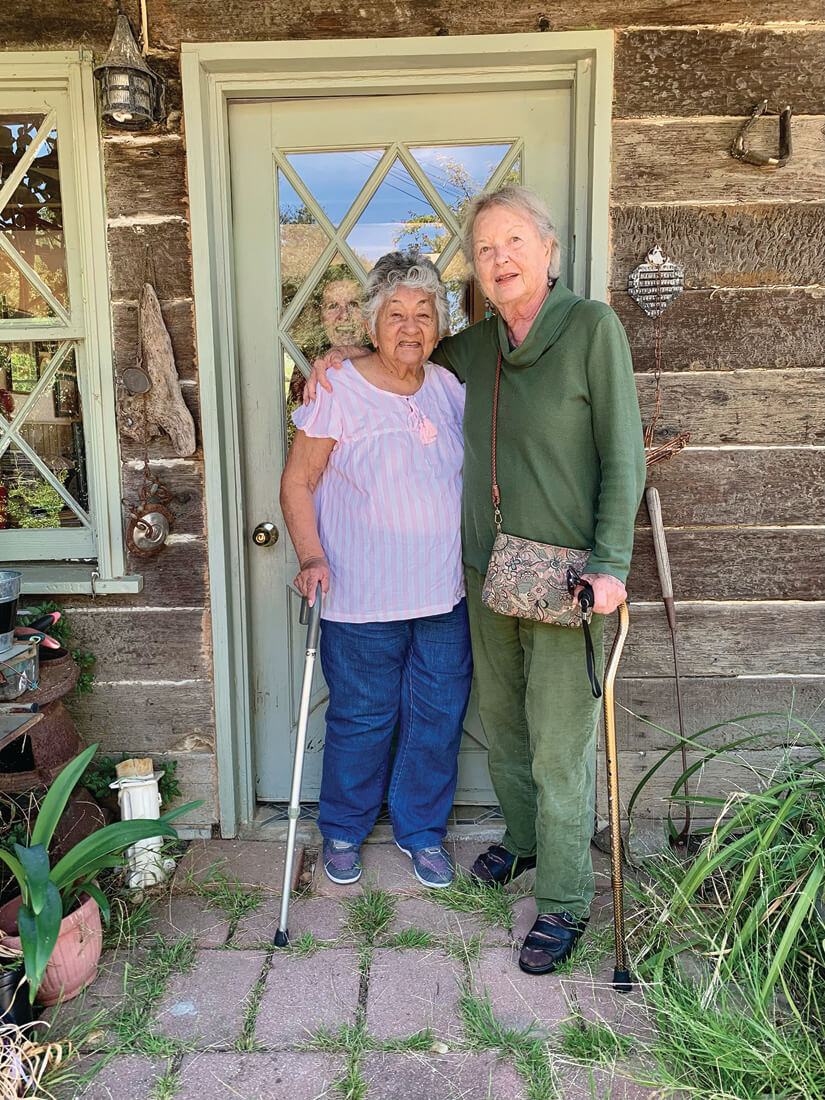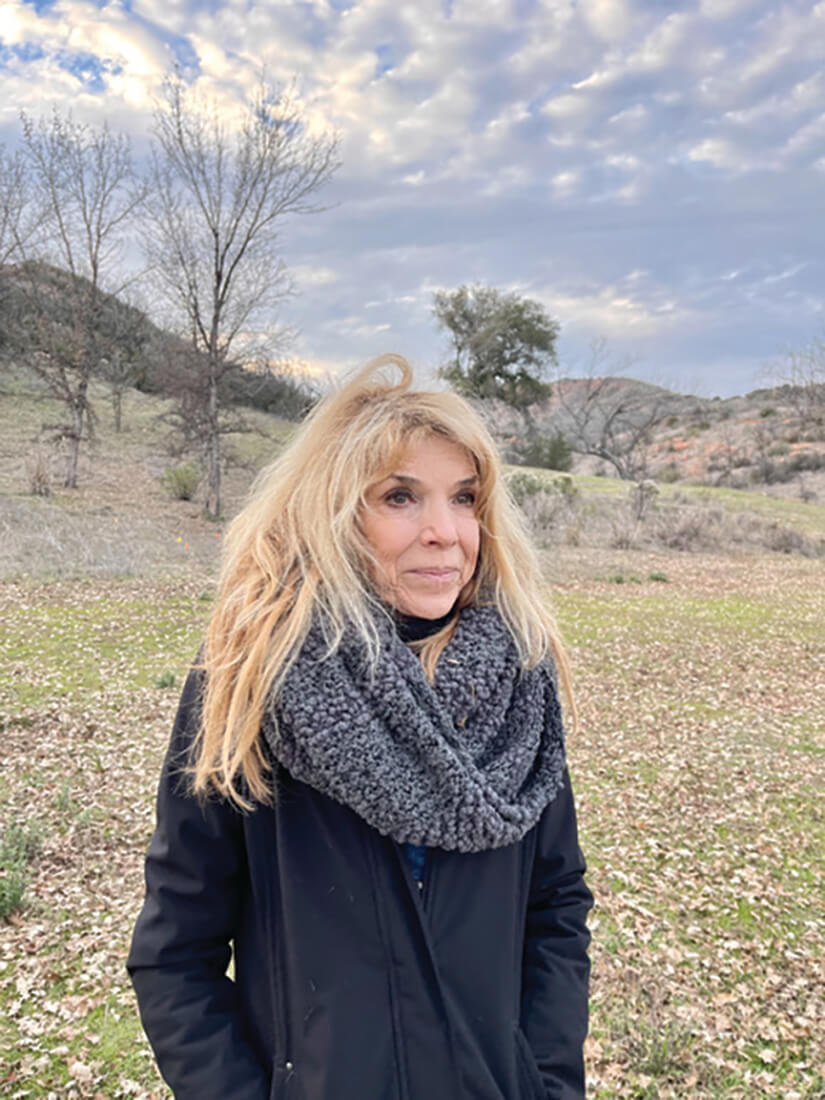Topanga Canyon Fire Safety Day Draws a Crowd | |
Topanga Canyon Fire Safety Day Draws a Crowd“It’s better to evacuate five hours too soon than five seconds too late.”
—Los Angeles County Fire Chief Drew Smith
Topanga is a beautiful place to live, yet it is a designated Very High Fire Hazard Severity Zone. Therefore, information and preparation are key for Topangans when it comes to fire safety and other disasters.
More than 150 concerned residents attended the very successful and informative Topanga Canyon Fire Safety Day at the Topanga Public Library on Saturday, Sept. 9. Folks attended lectures on evacuations, emergency communication and, home hardening, and visited tables laden with critical information on wildfire, earthquakes, disaster preparation and volunteer opportunities.
First responders at the event included representatives of the Los Angeles County Fire Department (LACoFD); L.A. County Forestry; the Lost Hills Sheriff’s Dept.; and CHP. Topanga is also covered by numerous government agencies such as the Mountains Recreation and Conservation Authority (MRCA) and the Resource Conservation District of the Santa Monica Mountains (RCDSMM).
Local non-profit organizations participating were the Topanga Coalition for Emergency Preparedness (TCEP), Arson Watch, Topanga Canyon. Fire Safe Council and Resource (TFSC), Neighborhood Networks (NN), the Topanga Chapter of Community Emergency Response Team (CERT), the Topanga Town Council, and Topanga SAGES.
Emergency Evacuation. Los Angeles County Fire Department Battalion 5 Fire Chief Drew Smith was the keynote speaker of the day. He is a respected fire behavior analyst who has spent years fighting and studying wildfire in the Santa Monica Mountains and throughout Southern California. According to the Messenger Mountain News, Smith is an expert in assessing temperature, relative humidity, wind speed, wind direction and fuel load—environmental variables that determine the level of fire risk and can help predict the path of a fire.
Before launching into his presentation, he acknowledged the Topanga residents who, following the 1993 Topanga and Malibu fires, created the Topanga Coalition for Emergency Preparedness (TCEP), “an organization that would leverage the collective know-how and wisdom of Topanga residents to provide accurate information before, during, and after a fire, flood, or earthquake. (tcep.org/about-tcep-what-we-do)
“So, Topanga started it all,” Smith declared and everyone applauded.
“So, on evacuations, we [the Fire Department] want to know what we need to do in order to make some sort of notification [to the public]— an Order, Warning or Shelter-in-place type of decision. Those decisions don’t come lightly; they are big, big decisions,” Smith said.
In fact, during the Owens incident in July, the decision was made to instruct residents of Viewridge to shelter in place instead of evacuating, causing traffic that might possibly block the roads and access to first responders.
“Emergency evacuations are a fact of life in the Wildland Urban Interface (WUI),” Smith warned. “It will happen, so be prepared before you have to go. Understand the vulnerability, prepare your property and home, have a plan, practice it, and consider early evacuation as a life-saving component.” Ladies of the Canyon are, from left, Tam Taylor of the Canyon SAGES, Carrie Carrier, President, and Alisa Land Hill, Vice President, of the Topanga Town Council. |
Smith said it takes about 10-15 minutes for a fire front to go over your property and 1,500-degree temps travel at about 30 feet per second. Referring to the deadly 2018 Woolsey fire, Smith said, “The risk was real, the threat was active, but until we had the opportunity and visibility to call in bulldozers and aircraft, were we able to secure the left flank of the fire that threatened to channel topographically through Monte Nido, to Summit to Summit, and down Old Topanga Canyon.”
Hoping never to face that disaster again, Smith spent time at Fire Safety Day educating Topangans as part of an information campaign on emergency evacuations.
“Professionals can help you but not if they’re overwhelmed fighting a wildfire. It’s better to evacuate five hours too soon than five seconds too late.”
Local non-profit organizations particip ating were the Topanga Coalition for Emergency Preparedness (TCEP), Arson Watch, Topanga Canyon Fire Safe Council and Resource (TCFSC), Neighborhood Networks (NN), the Topanga Chapter of Community Emergency Response Team (CERT), the Topanga Town Council, and Topanga SAGES. Among those presenting were:
Home Hardening: Ryan Ulyate of the TCFSC presented its Home Ignition Zone Evaluation program that offers free evaluations to identify ignition points around your home that invite embers, a major cause of house fires.
The presentation is available online at firesafe@ntcfsc.org.
Emergency Communications: James Grasso of TCEP (https://www.tcep.org), discussed emergency communications, such as such as Alert L.A. County, a free mass notification system for L. A. residents and businesses. (alert.lacounty.gov). Register at ready.lacounty.gov/alerts.
Pulse Point is also an excellent site for information and emergency updates (pulsepoint.org).
New Notification Terminology
Developed by the Governor’s Office of Emergency Services (Cal OES) in 2020, Smith presented the most up-to-date, standardized terminology for ordering evacuations in an emergency:
Evacuation Warning—Potential threat to life and/or property. Those who require additional time to evacuate, and those with pets and livestock should leave now.
Evacuation Order—Immediate threat to life. This is a lawful order to leave now. The area is lawfully closed to public access.
Evacuation Order(s) Lifted—The formal announcement of lifting evacuations in an area currently under evacuation.
Hard Closure—Road closed to ALL traffic except Fire and Law Enforcement.  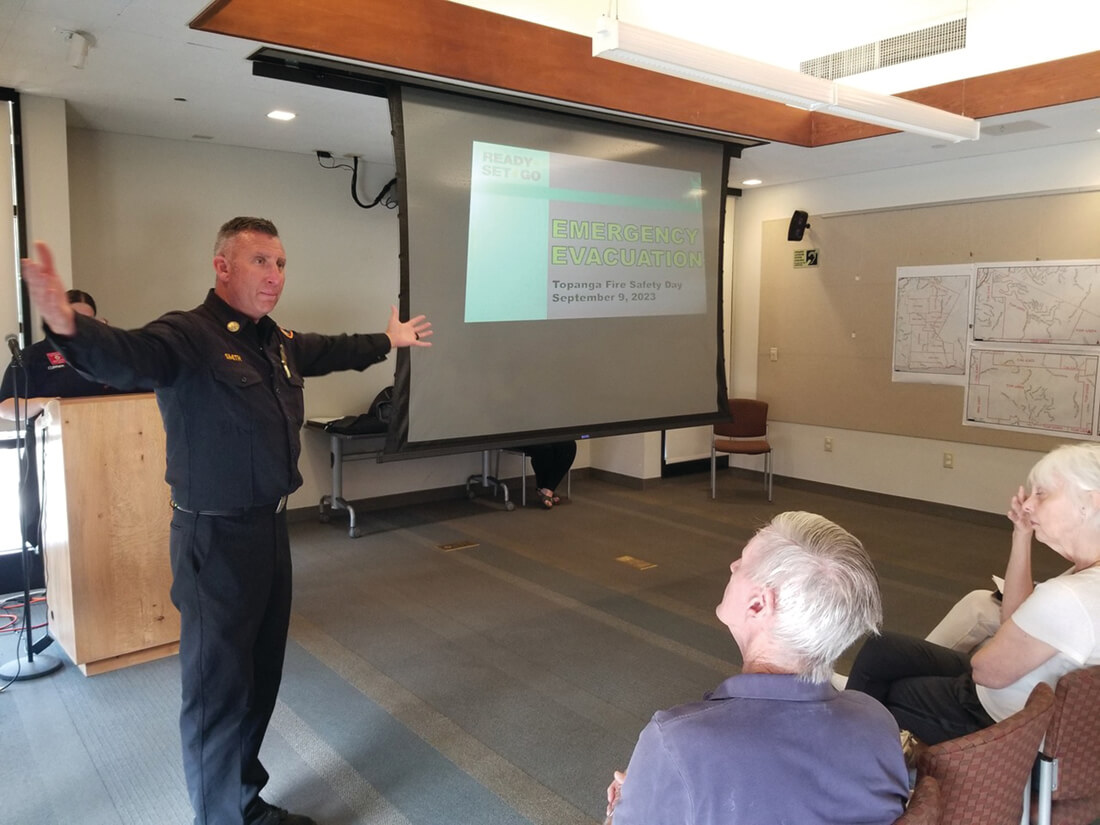 L.A. County Fire Chief Drew Smith, keynote speaker at the Topanga Canyon Fire Safety Fair on Sept. 9, presented new information about emergency evacuation and the importance of being prepared for emergencies. | 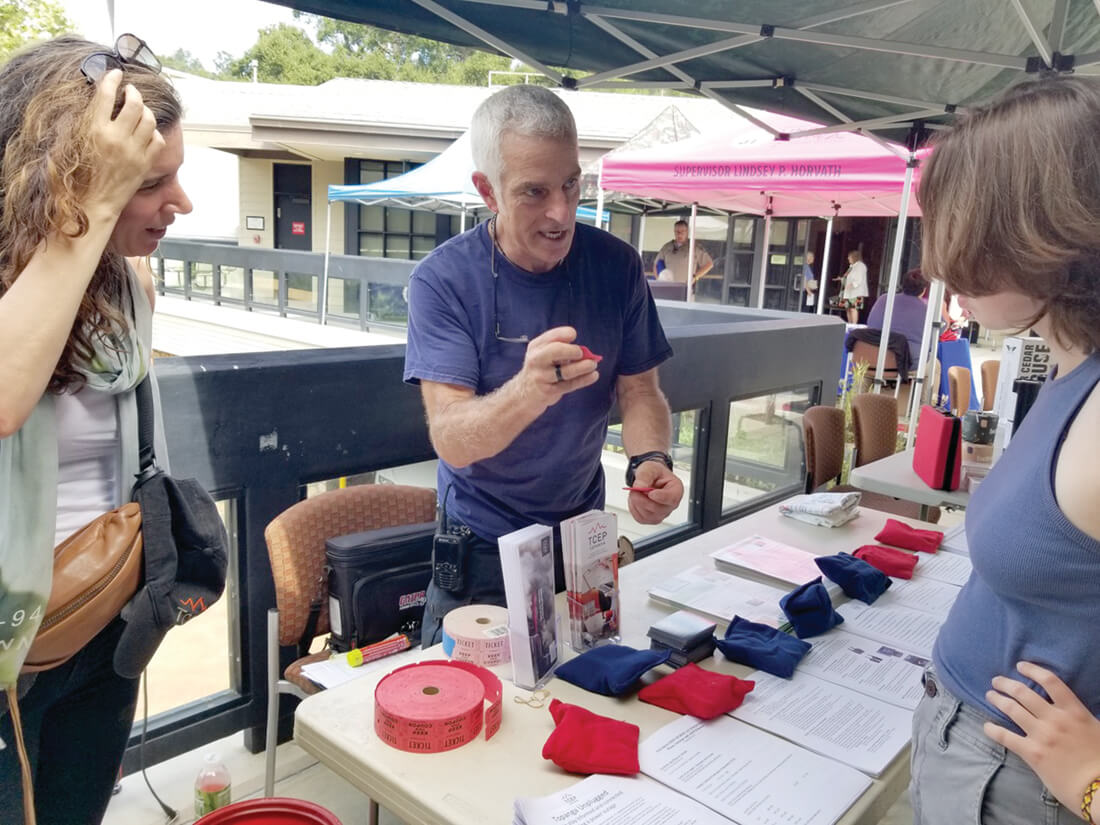 James Grasso of TCEP, spoke about emergency communications and available resources when all power is out during an emergency. He was also in charge of the raffle whose winners went home with some of those resources, e.g., FRS radios, and, of all things, a bat house. Yes, a home for bats, not essential for fire prevention, but good to have around to help decrease the mosquito population!
Soft Closure—Road closed to all traffic except Fire, Law Enforcement and critical Incident resources. (i.e., Utility, Caltrans, City/County Roads etc. or those needed to repair or restore infrastructure).
Resident-Only Closure—Soft closure with the additional allowance of residents and local government agencies assisting with response and recovery.
Shelter in Place—Go indoors. Prepare to self-sustain until further notice and/or contacted by emergency personnel for additional direction.
Shelter in Place was included in the official statewide standard evacuation terminology, but it can also be utilized in tactical ways that are not a last resort—such as if your home is in a zone that is not threatened, but a nearby zone is—you may be asked to Shelter in Place and stay off the roads, so that the people in the affected area can evacuate more quickly, and emergency vehicles can access the area more easily.
When to Shelter in Place—Evacuating early is always the safest option. Leave as soon as you can after receiving any Evacuation notification.
However, wildfires can be extremely unpredictable and fast moving, and sometimes evacuating is not possible. If a fire is approaching too rapidly for you to safely evacuate, sheltering inside your home may be the safest option, rather than attempting to travel to another location.
Public Safety Refuge Areas?—In the past, Topanga Canyon residents have been instructed to go to predesignated Public Safety Refuges (PSR), or Public Temporary Refuge Areas (PTRA) if unable to evacuate the canyon during major wildfires.
However, after reviewing this guidance under current wildfire conditions and dynamics, it is no longer the default advice:
If you find yourself away from home as a fire approaches, these locations could be an option, but it is not advised to leave home specifically to get to one through unknown conditions
It MAY be safer to stay home than leaving your house to try and reach one of these areas
Due to the highly variable nature of fire, there is no way to know if these locations are safe during any given incident
Some of these areas are on private property, and there is no guaranteed maintenance
We do not want residents driving past other safe locations to reach one of these areas, which may not be safe, or may be at full capacity
The Topanga Disaster Survival Guide is currently being updated, and will include more specific information on what to do if you find yourself away from home during a wildfire
Know Your Zone
Los Angeles County’s “Ready, Set, Go!” program provides guidance on creating a personal wildfire action plan: fire.lacounty.gov/rsg
Be Aware!
Topanga Evacuation Zones have changed some boundaries—best way to know yours is, go to and enter your address at: protect.genasys.com/search?z=12&latlon=34.1%2C-118.62
 | | | | | | | | | | | | | |
|
|
|
|
|




